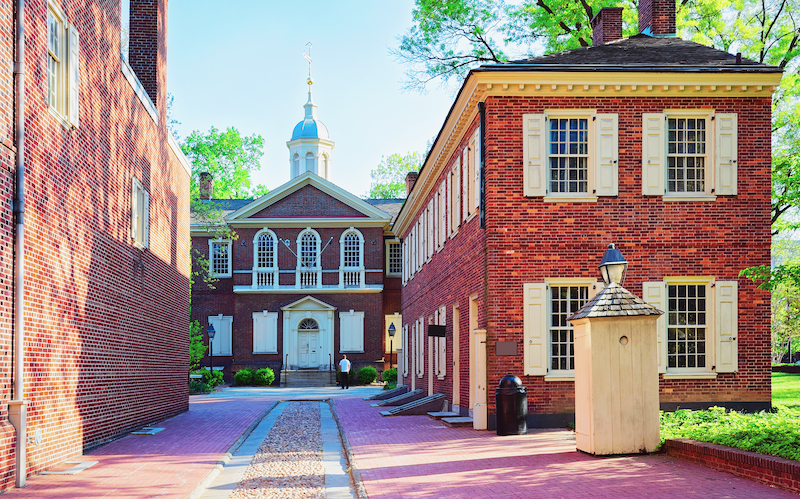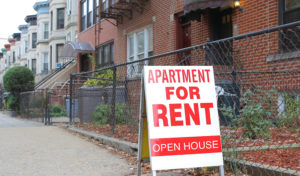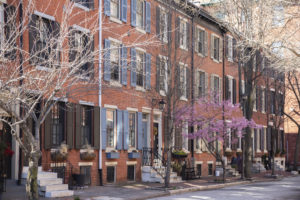
More Philadelphia historic properties could be revitalized with reduced red tape.
In 2019, older buildings in Philadelphia, “the Birthplace of America,” were being demolished at a record pace—941 structures fell, or an average of more than two a day.
Philadelphia’s city government has since responded to this mass demolition with a package of reforms designed to help preserve the city’s historic heritage. Through a series of laws adopted late last year, Philadelphia aims to encourage rehabilitation over demolition for historic structures by reducing developers’ regulatory burdens associated with projects that preserve older buildings.
These recent laws made four targeted changes: reducing parking requirements, allowing homeowners to carve out additional units in their historic homes, eliminating formal zoning changes, and increasing neighborhood control over properties listed on the Philadelphia Register of Historic Places.
Philadelphia’s first reform was to reduce its parking requirements when owners modify their historic property for a new use, such as by converting a former school into apartments. With the recent reform, the City will waive the parking space requirements entirely when a historic building is rehabilitated or will halve the parking requirement if the construction expands the building.
If property owners live in their historic homes, a second reform gives them the right to create an accessory dwelling unit (ADU) within their house. ADUs are sometimes referred to as “garage apartments” as this is a common space that homeowners convert. By giving Philadelphia property owners this right, the law could reduce need for demolition by creating an additional revenue stream for historic property owners to maintain their personal residences. This law benefitting residential property owners is unique because residential historic properties receive fewer financial incentives such as tax credits available to commercial or other income-producing historic properties.
Philadelphia’s third reform ensures that developers rehabilitating properties for a new use can do so by right. This means that developers do not need to go through an administrative process with the City to rezone a property when it is listed on the Philadelphia Register of Historic Places and 2,500 square feet of the property has been or will be used for one of a few specific purposes. These purposes seem targeted to benefit the surrounding community and include many commercial and office uses. In practice, this law could allow a former factory to be converted into office space, due to the building’s industrial history as well as its future as office space.
Finally, Philadelphia’s fourth recent legal reform will allow greater local control over demolition that occurs within individual neighborhoods. Areas designated as neighborhood conservation overlay districts (NCOs) give historic neighborhoods local oversight over their urban planning—and one of Philadelphia’s new laws also gives NCOs local control over demolition. This law requires developers to secure a demolition permit—that is, approval—from an NCO in addition to obtaining a building permit from the city.
Together, these four legal reforms appear to make historic preservation more feasible within Philadelphia. Because these reforms loosen procedural requirements for Philadelphia’s development approval process, they do not impose a direct cost on taxpayers—and in fact they may reduce the cost of certain projects for homeowners and construction companies. Cost is often prohibitive for historic preservation, and these changes could help level the playing field to save historic properties.
Philadelphia’s new regulatory scheme improves the city’s ability to reap the benefits associated with rehabilitating historic properties. The New Jersey Historic Trust estimated that “historic nonresidential rehabilitation” created 38.3 new jobs for every $1 million invested—more than the 36.1 generated by “nonhistoric nonresidential rehabilitation” and 33.6 made by highway construction projects. At the federal level, the National Park Service has emphasized that sectors beside construction benefit from historic rehabilitation efforts—including the service, manufacturing, retail trade, agriculture, mining, transportation, and public utility sectors.
As of publication, the City of Philadelphia appears optimistic about its reforms. A City Councilmember who helped draft the bills suggested that these efforts would “preserve Philadelphia’s historic architecture by allowing thoughtful renovations that will keep the buildings in use for generations to come.”
These regulatory changes may appease others hoping to create sustainable new living spaces in Philadelphia. The Mercatus Center suggests that parking requirements discourage development and increase property costs. These issues can limit affordable housing options in areas with space constraints and high land values, such as urban locations. The Clean Air Council, a Philadelphia environmental non-profit organization, also has noted that parking requirements “deter compact, mixed-use, and transit-oriented development” and force reliance on polluting automobiles.
Outside experts also appear to support these reforms. Praising Philadelphia’s encouragement of garage apartments or ADUs, David Morley of the American Planning Association reportedly commented that ADUs are “the least radical way to add housing without changing the appearance of existing neighborhoods.”
That said, ADUs could create some contention in the future. In Northern California, possible ADU locations grapple with costly regulatory and construction expenses, and residents are often dissatisfied with their living spaces in new garage apartments.
Although Philadelphia and its residents wait to see how these measures help historic preservation activity in practice, this package could mark the start of Philadelphia martialing even more government support for its heritage.
In addition to the recent legal changes, the city’s Historic Preservation Task Force has published recommendations that clarify Philadelphia’s historical registration process for buildings, bolster education and outreach, and support archaeology.
The future will determine how much more Philadelphia invests in its past.



